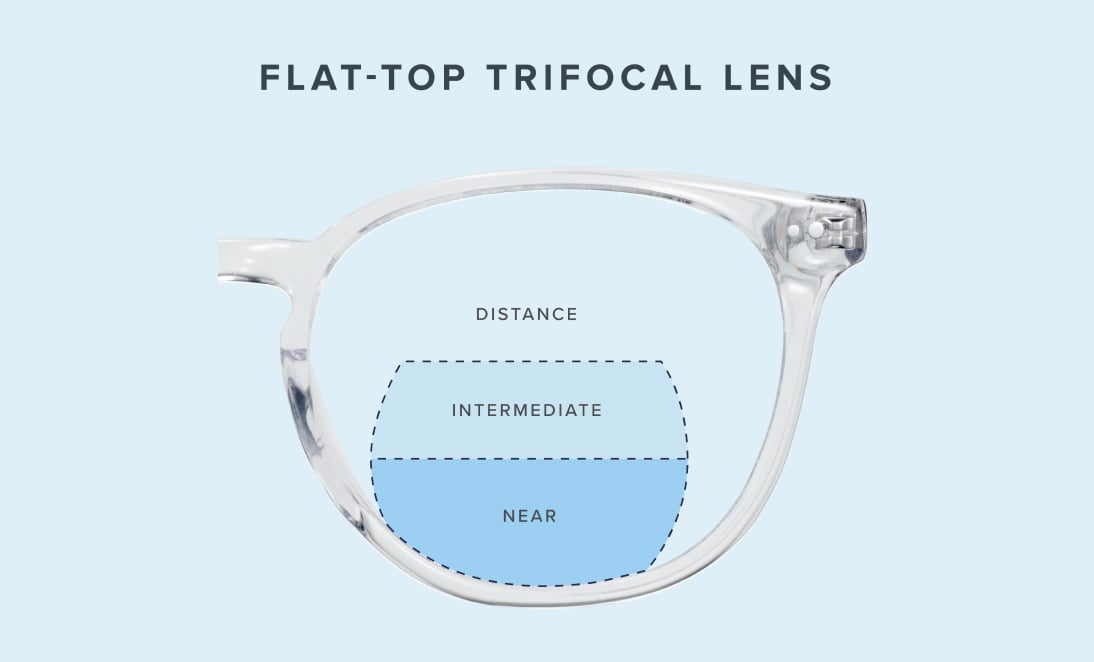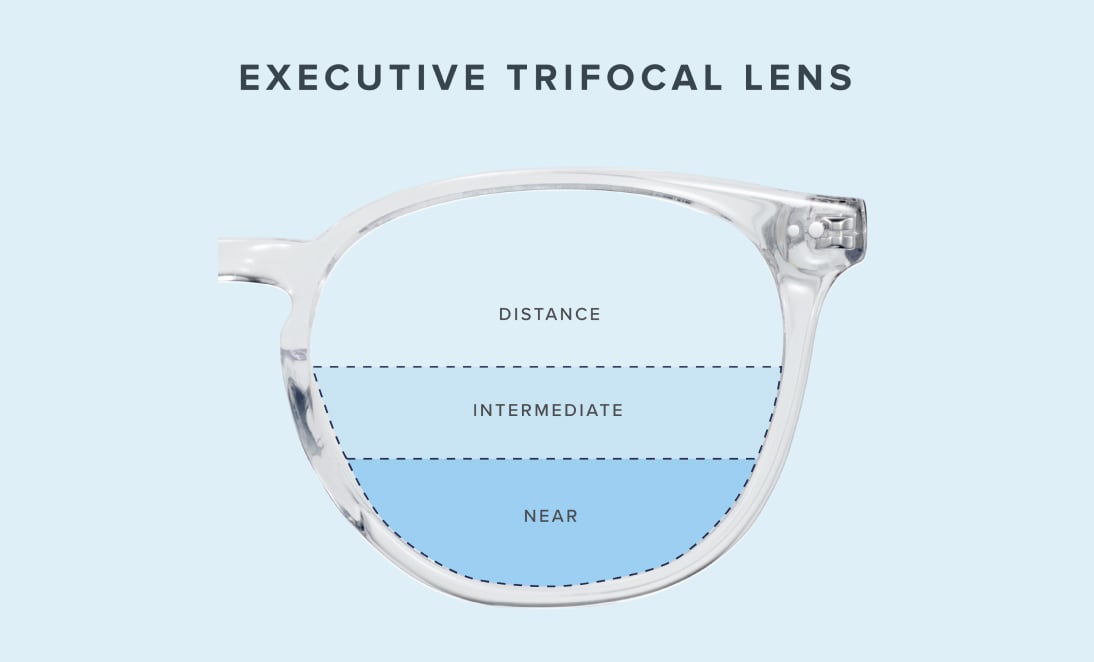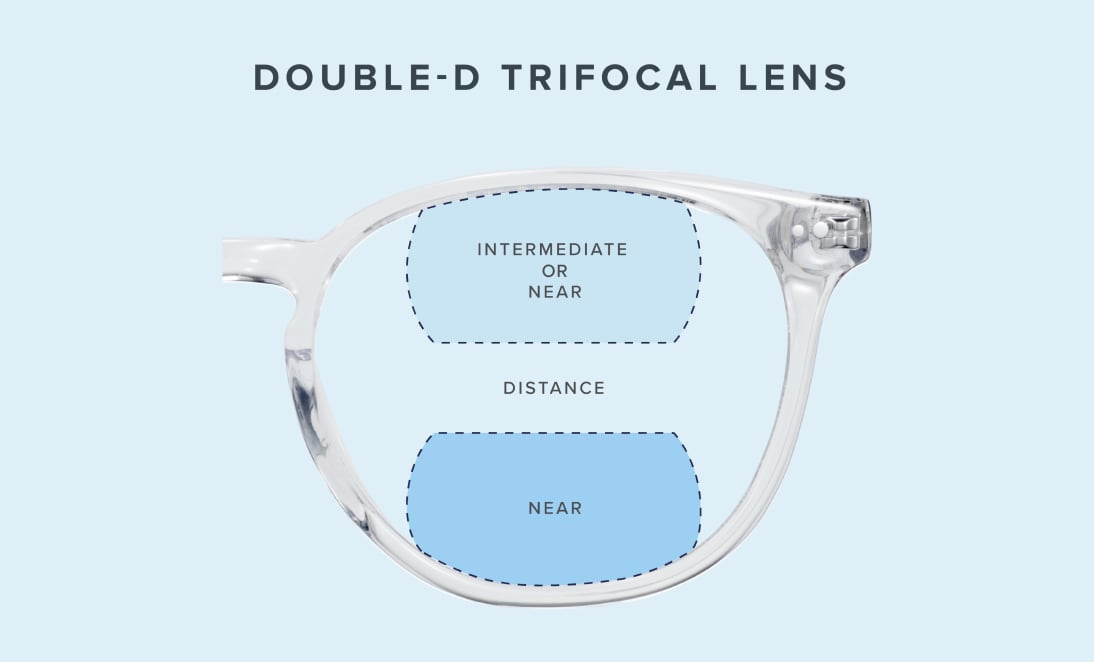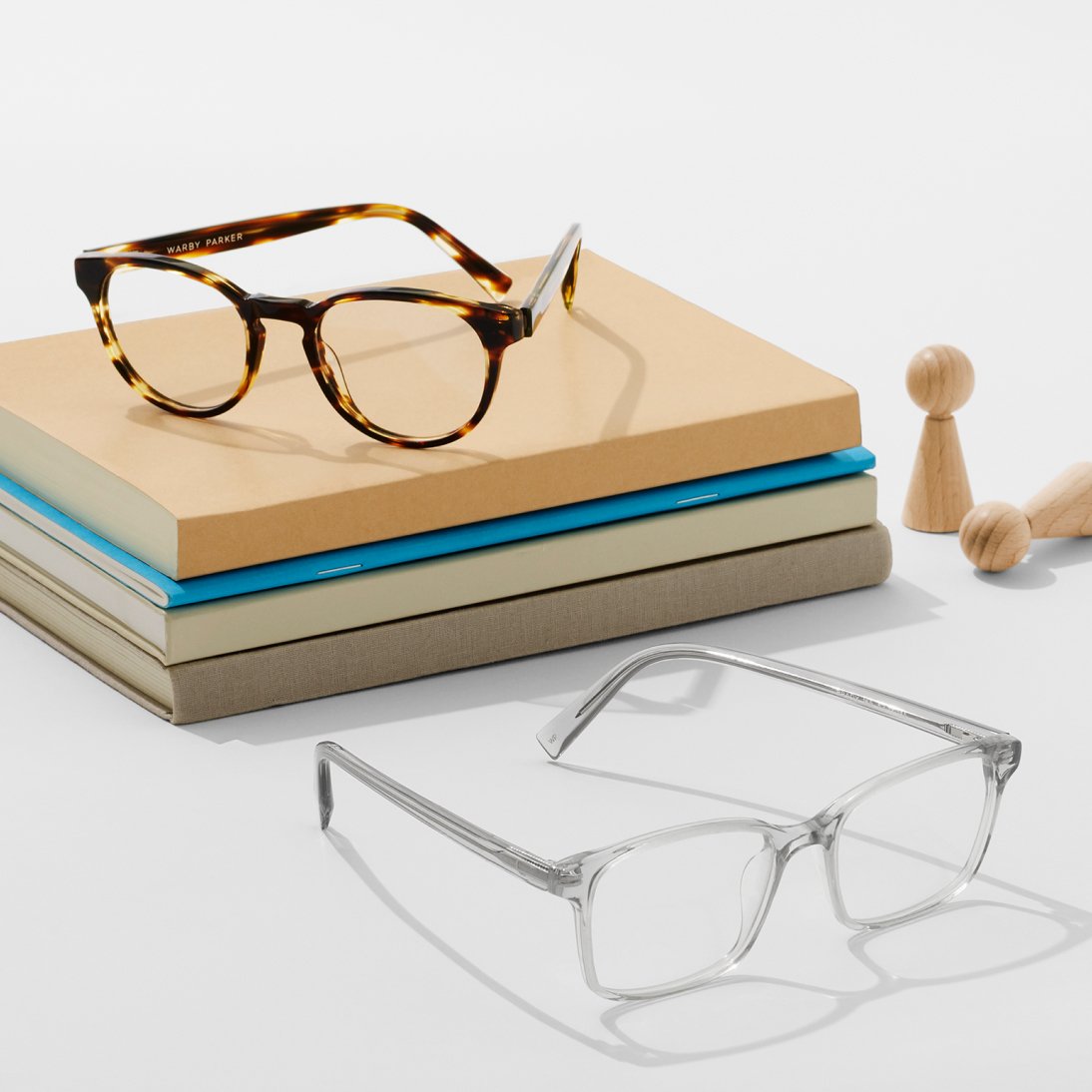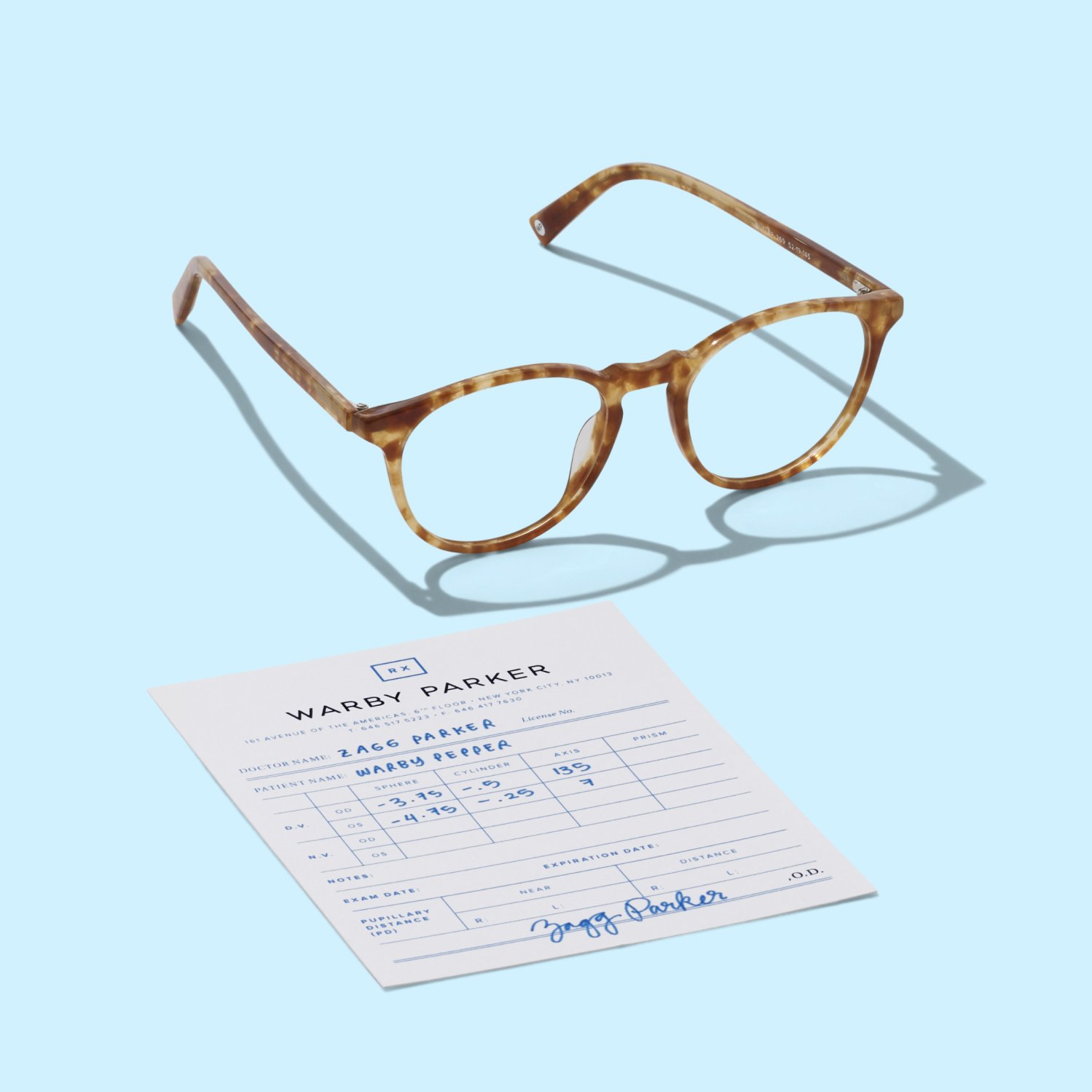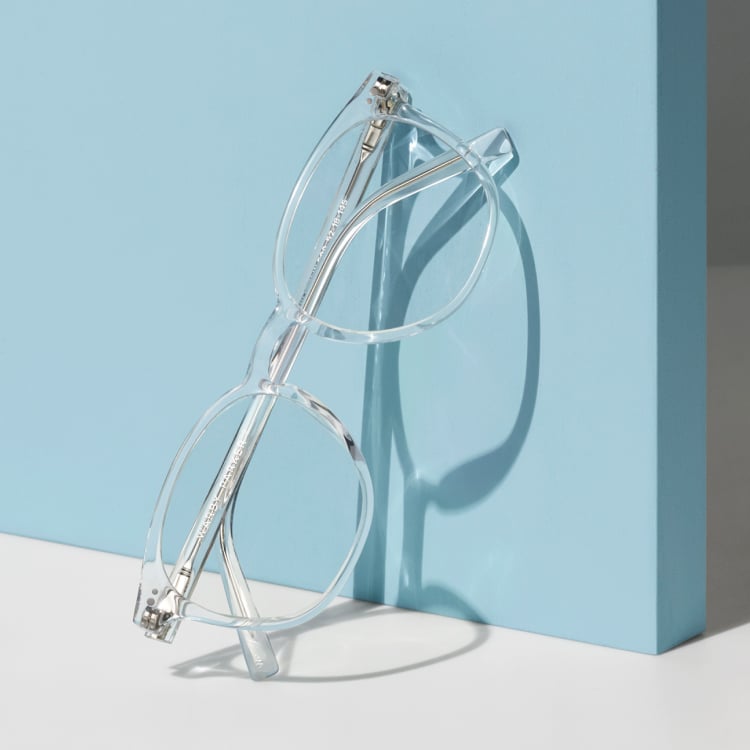Trifocals are like having three pairs of eyeglasses rolled into one. This is because trifocal lenses have the ability to use three different prescription strengths in the same lens. A visible line divides the lens into three optical power zones: one for distance vision, one for “arm’s length” or intermediate vision, and one for close-up vision.
In this article, we’ll explain how trifocal glasses work and go over how they compare to bifocals and progressives.
What Are Trifocal Lenses?
A trifocal lens is a type of multifocal lens that, like any glasses lens, gets fitted inside eyeglasses frames. Multifocal lenses can be thought of as the opposite of single-vision lenses, which address only one vision problem. Trifocal lenses address three vision issues in one lens. They’re built to help people whose vision is blurry at three general distances—close up, far away, and in between.
Multifocal glasses let people see close-up (for example, while reading) and at farther distances. They tend to be prescribed for people who have presbyopia and one or more other refractive errors, such as myopia (nearsightedness), hyperopia (farsightedness), and astigmatism.
How Do Trifocals Work?
A trifocal lens is divided into three viewing zones to correct vision for three different distances.
These zones are situated in different areas of the lens. Most commonly, the zones appear in the lens in this order from top to bottom:
- Distance viewing: The zone for viewing at a distance is usually at the top of the glasses. This is where you might look across a parking lot or gaze at the horizon.
- Intermediate viewing: The intermediate zone—for viewing things that are neither near nor far—is generally in the middle of the lens. This is where you might look at the TV or check out what’s on the restaurant buffet at arm’s length.
- Up-close viewing: The zone for viewing close-up objects is usually at the lower part of the lens. This is where you’d probably read messages on your phone or sew on a button.
If you think about it, the placement of these zones makes sense. People tend to look down when reading or looking at something close up. When looking farther away, we tend to focus our gaze upward.
Types of Trifocal Lenses
The viewing zones in trifocal lenses can be shaped in different ways. The three types of trifocal lenses shown below are the most common.
Flat-top trifocal lenses: This is the most common type of trifocal lens. The zone for viewing close-up is D-shaped, with the zone for intermediate viewing above it.
Executive trifocal lenses: The different viewing zones extend all the way across the glasses lens. These are also referred to as Franklin lenses, named for the inventor of bifocals, Benjamin Franklin.
Double-d trifocal lenses: Trifocals like double-d lenses, which have a more unusual arrangement of viewing zones, are usually referred to as “occupational” trifocals. In double-d trifocals, the near-vision zone appears twice: at both the top and bottom of the lens. This type of lens might benefit someone who does a lot of close-up work that’s positioned above their head.
Bifocal vs. Trifocal Lenses
Trifocal lenses are a lot like bifocal lenses. But while bifocal lenses have two power zones, one for distance vision and one for close vision, trifocal lenses have a third power zone. This third zone corrects vision at intermediate distances.
Trifocals vs. Progressives
Progressive lenses can correct for the same three viewing zones as trifocals. The main difference between trifocals and progressives is that progressive lenses don’t have an obvious visible line between the power zones.
Additionally, the transition between each zone is different in trifocal lenses versus progressive lenses. You can think of this as the difference between a step and a ramp. With trifocals, the transition between the different prescriptions in the three zones is abrupt. In contrast, progressives gradually transition between the prescriptions in each of the three zones.
Disadvantages of Trifocal Lenses
Trifocal lenses have some disadvantages compared to progressive lenses. For example:
Visible line on trifocals: Progressives lack the visible line between the zones on trifocals. This makes progressive lenses more aesthetically appealing than trifocals. Progressive lenses look more uniform.
Hard transition between zones: The gentler, seamless transition between the zones on progressives makes them easier to get used to and wear than trifocals. Also, with trifocals, vision can sometimes blur between the zones.
Wondering Which Glasses Are Right for You? Ask an Eye Doctor.
If you think you might need multifocal lenses like trifocals, it’s best to get a comprehensive eye exam with an eye care professional. They’ll make sure you’re wearing the proper eyeglasses for your vision needs. Your eye doctor can also help you sort out whether multifocal contact lenses might be right for you. They’ll check for any underlying eye conditions, too. (Plus, you might get to pick out a new pair of glasses.)


